
Korkeasaari Zoo (Helsinki) and Wood Focus Finland organised an architectural competition for the students of architecture at Helsinki University of Technology, with the assignment of designing a ten-metre-high view tower out of timber for the Zoo.
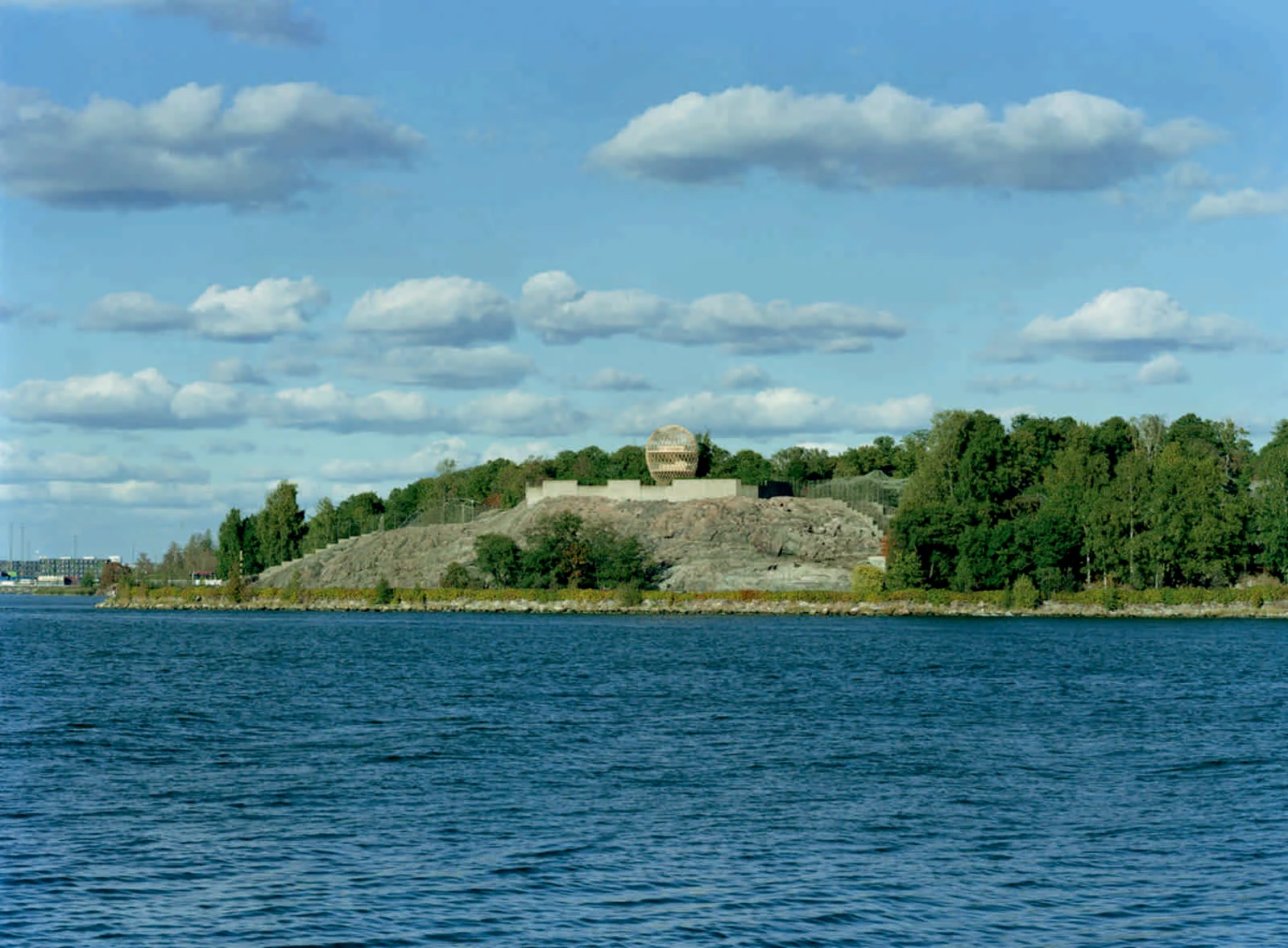
The free form of my winning entry was motivated by the natural setting; it follows the surrounding stone wall and skirts around a group of birches. in January-May 2001 students at the Wood Studio workshop developed the draft design further by assembling scale models and exploring structural details. As the management of the irregular form proved difficult, I moulded a plastoline model. Digital images of the model then functioned as a basis for the AutoCad drawings.

Using the level drawings we constructed a 3D-computer model onto which we ”taped” the curved battens to form the gridshell. the most important lessons came from the laborious building of a two-meter-high one to five model. Finding solutions to the problems that came up at this stage saved us from many unpleasant surprises during the actual construction phase. the students participating in the workshop were from Finland, Japan, the U.S., the Netherlands, Italy and Portugal. the workshop was supervised by Professor Jan Söderlund and architect Risto Huttunen.

After the workshop, I laminated full-scale test pieces of battens, which form the basket-like gridshell. I studied whether the pre-bent battens tolerate bending and twisting to a sufficient degree as to allow their use in a construction of this type. When the laminated timber resisted twisting I resorted to steaming, a traditional method in boatbuilding. the effect of surface treatment with linen oil-based wood balm on moisture content was determined by moisture tests and the durability of the joints was proved by tension tests.
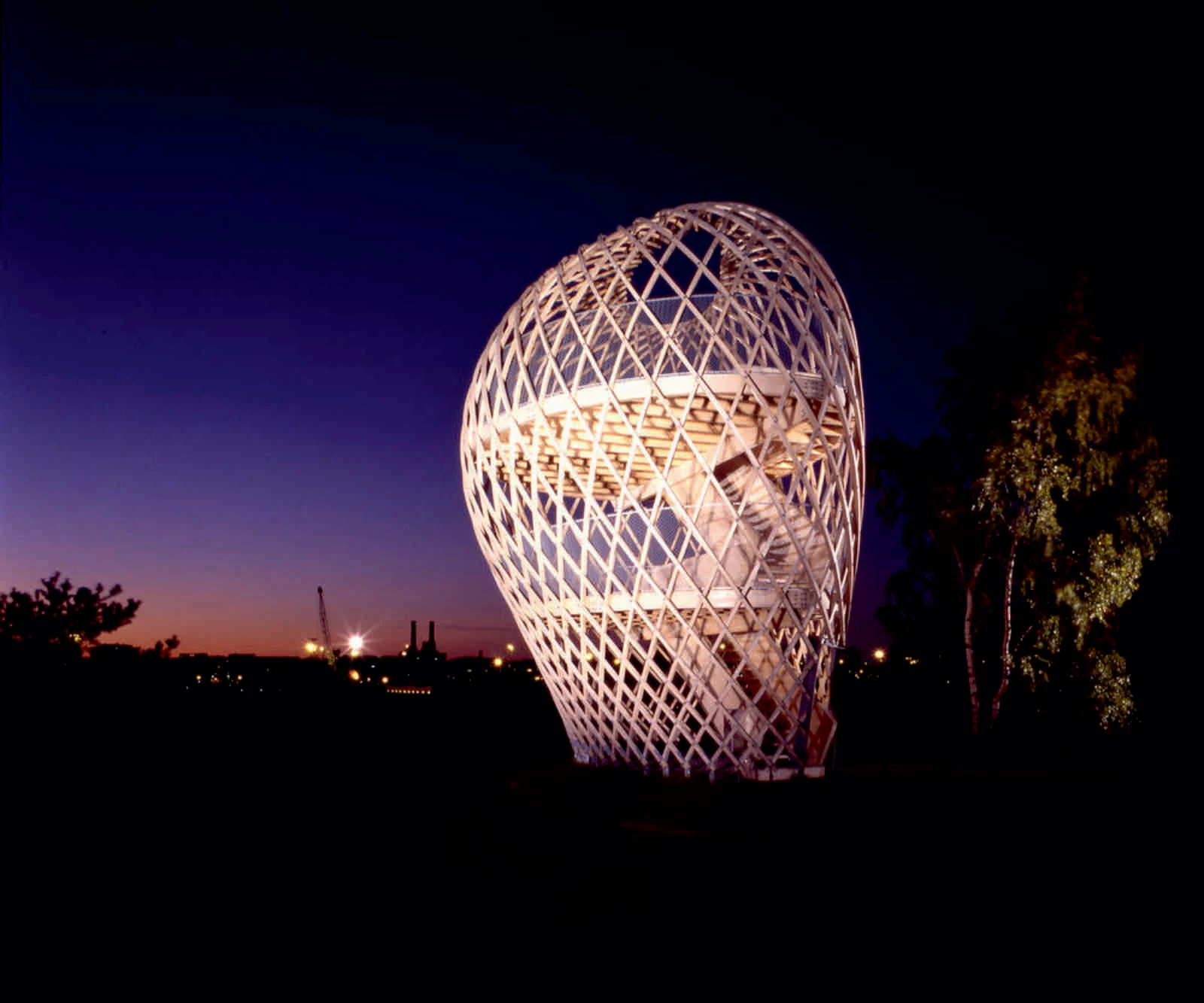
Finally in June-August 2002 the tower was erected by an international group of eight students of architecture. the hot, sunny summer dried up the timber, and the duct pipes that were used for steaming proved useful. It took us three months to complete the job; now the bubble is a delicately transparent landmark of Korkeasaari Island.

The site is eighteen metres above the sea level and the tower is very visible in the Helsinki sea line. A wonderful view of the sea and the city centre opens up from the ten-metre-high two-storey tower. the structure behaves like an eggshell; even when the gridshell, which consists of over 600 joints, is punctured it withstands the load. the load bearing structure consists of 72 long battens with a section of 60mmx60mm that are bent and twisted on the site from seven pre-bent types. As the tower has no structural protection against weathering, it is treated with a linen oil-based wood balm with Uv-protection.

Why did I choose the shape of a bubble as a basis for the design? As a rule, our western culture favours rectangular forms. the box is considered a standard shape the use of which need not be explained. in nature, however, curvilinear forms are present in everything from cells to planets. Cost-effective and durable, vault structures have been used throughout history, in native mud huts as well as in architectural masterpieces such as Gaudi’s Sagrada Familia, which was planned with the use of upside down hanging chain models.

Curvilinear forms are also closer to the human physique than rectilinear, which is why people experience organic forms as humane. Professor Jan Söderlund initiated the Helsinki University of Technology Wood Studio workshop in 1994. the course was aimed to contrast the rather pragmatic building technology courses. It is characterised by innovation and artistic approach. the students are selected by an annual student competition and half of them are foreigners.
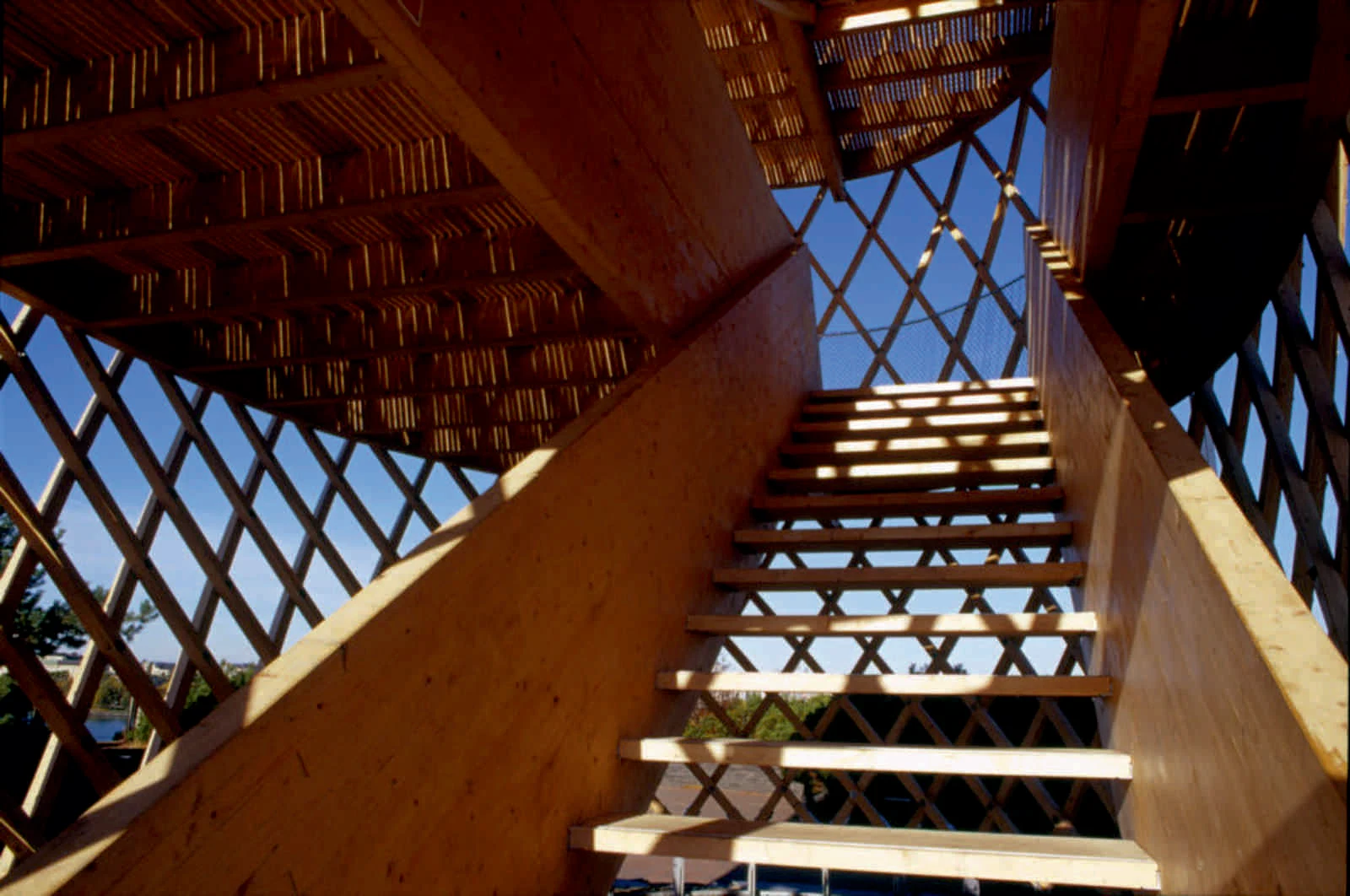

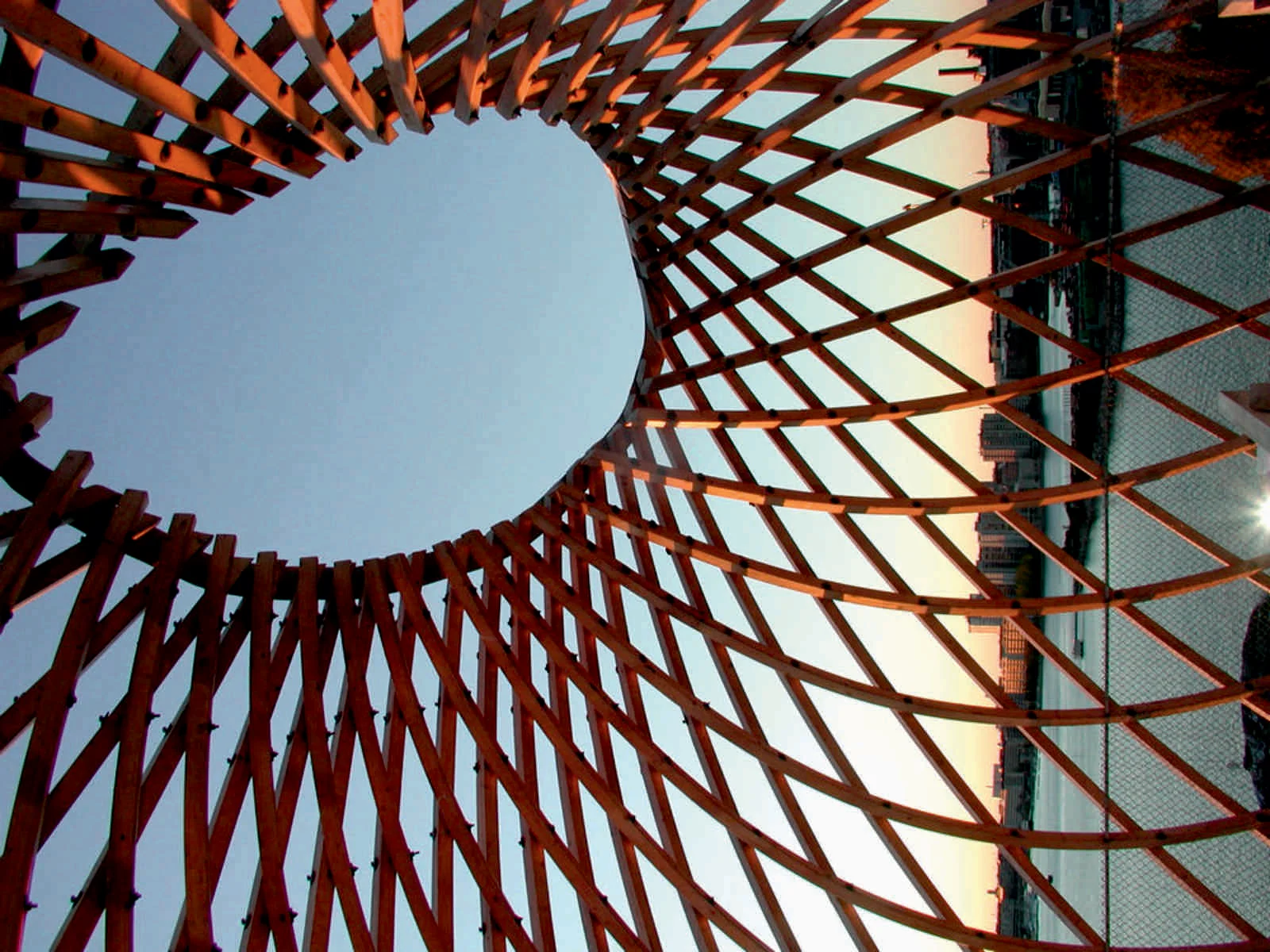
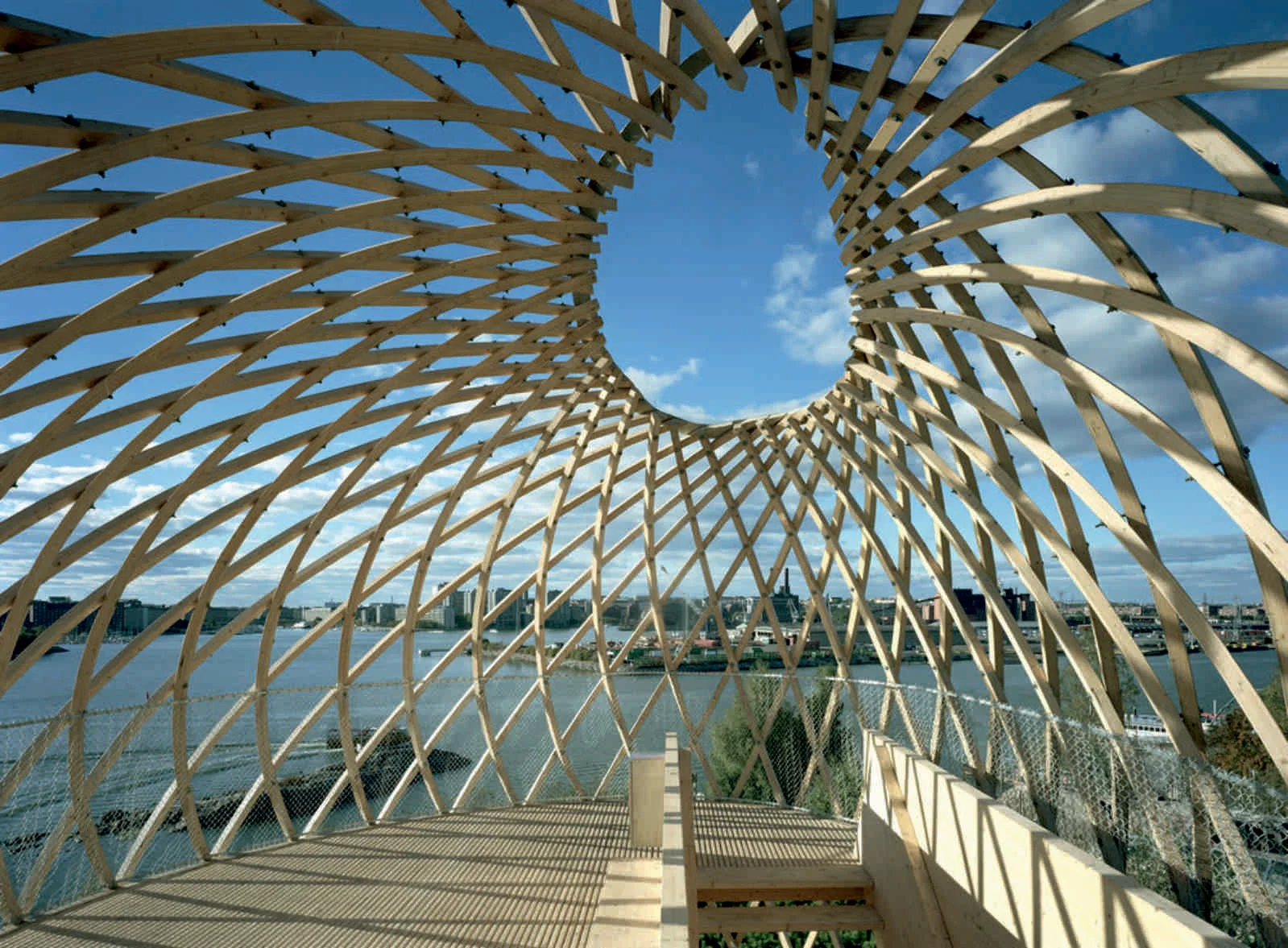
Location: Helsinki, Finland Architects: Avanto Architects Partner: Hut Wood Studio, Ville Hara, Anu Puustinen Structural engineering: Di Hannu Hirsi, Di Lauri Salokangas /Nuvo Engineering Area: 82 brm2 Period of design: 2000-2002 Photography: Jussi Tiainen, Hut photography laboratory Software used: AutoCad